History of the Dublin Bay Prawn
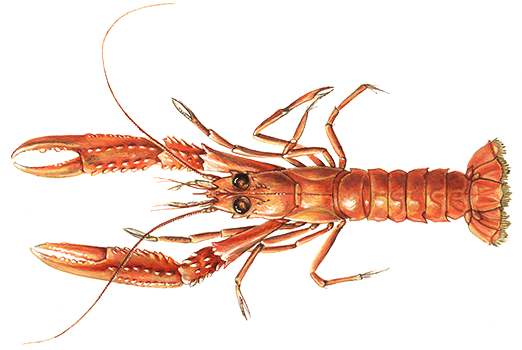
In 1758 Carl Linnaeus included Nephrops norvegicus in his 10th edition of Systema Naturae, the starting point for zoological nomenclature. It was listed as 'Cancer Norvegicus' with a type locality of in Mari Norvegico ("in the Norwegian sea").
Nephrops norvegicus is often referred to as Dublin Bay prawn. However, the French name langoustine which translates to something like ‘lobsterette’ is much more appropriate as it really resembles a small lobster. Sometimes this rather pretty looking crustacean is also referred to as demoiselles de Cherbourg. The Italians called them 'scampi'.
The name Dublin Bay prawn came about, because it was in Dublin that they were first regularly landed. They were regarded as an incentive for the crew when caught as unsolicited bycatch by trawlers fishing the northern edge of the Irish Sea. The crew would sell the bite-sized lobsters to street vendors to make extra cash. Since the Dublin Bay prawn wasn’t strictly ‘above board’, they were off-loaded at sea, in Dublin Bay to be precise, before the ship landed its official catch in the harbour.
The Nephrops fishery in Ireland
The unofficial market gave the prawn some commercial value. But it was the 1950s that catapulted the crustacean onto the seafood menu of the British Isles and Irland dressed up in breadcrumbs and deep fried served up with tartare sauce as ‘scampi’.
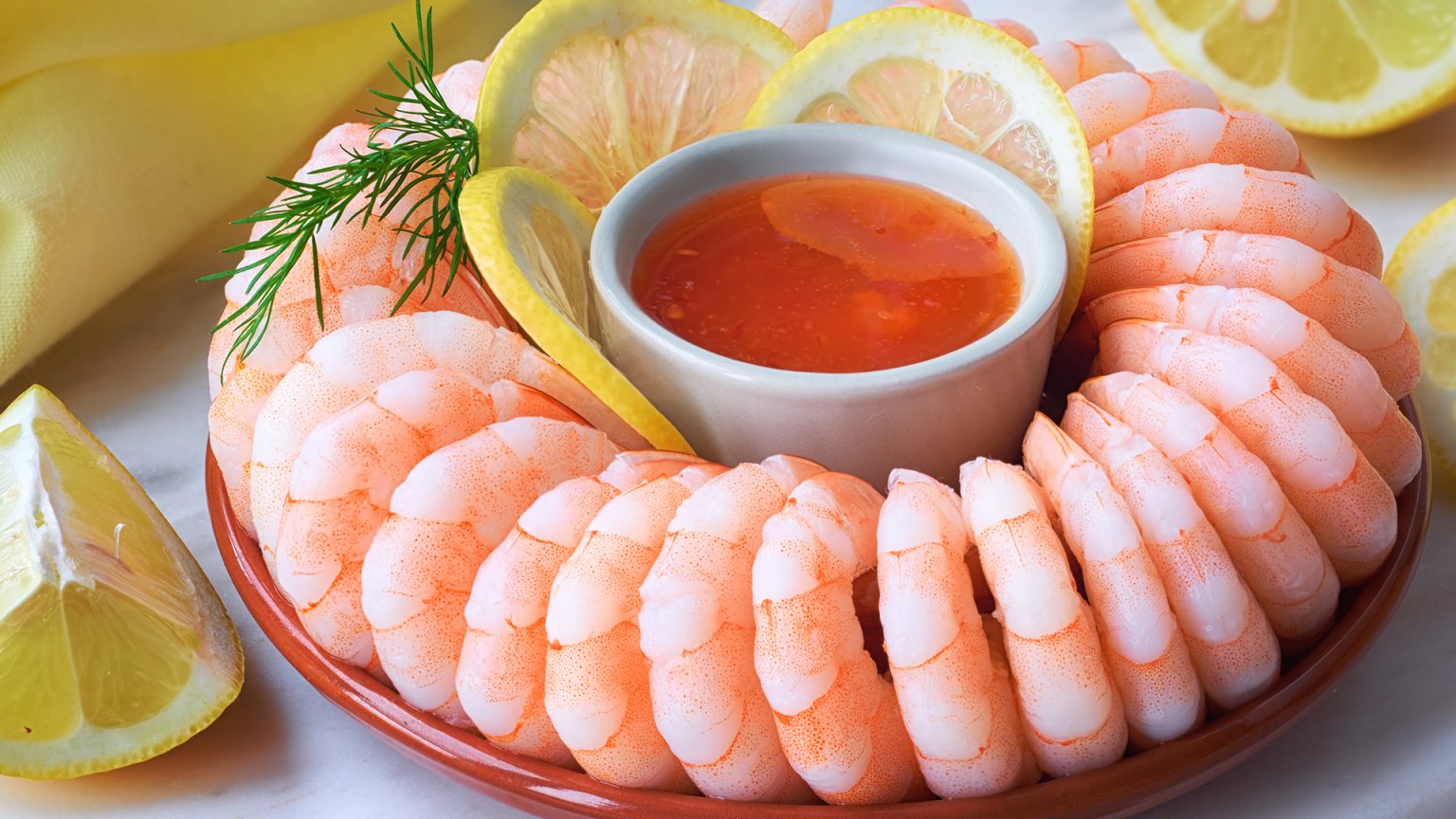
Production became increasingly industrialised focusing on the meat in the pawn tail while discarding the rest. The 1960 and 70s were as much the scampi and chips years as they ever were the prawn cocktail years.
The demand for scampi tails increased so dramatically that it had effect on the supply and called for imitations. Some imitations came from farmed cheap prawn tail imports from the tropics and the improvisation even extended to the use of extruded, artificially flavoured fish products. In Britain food labelling laws now insist that any product called scampi is made only from Nephrops norvegicus. But if this is really the case with sales of frozen breaded scampi over 900 tonnes annually in Britain alone it is doubtful that these are all true Dublin Prawn.
Nephrops Trivia
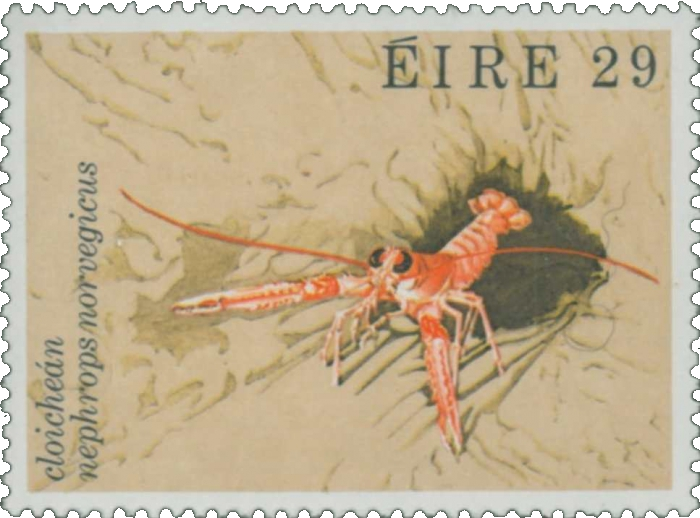
In 1814, William Elford Leach erected the new genus Nephrops and N. norvegicus was moved into this genus as the only species alive ever since. However, seven fossil species have since been described in the genus. For example, Nephrops shastensis age range 99.7 to 66.043 Ma described by Rathburn in 1929; Nephrops buntingi with age range 66.043 to 55.8 Ma described by Feldmann and Holland in 1971 and Nephrops kvistgaardae age range 11.6 to 7.2 Ma described by Fraaije et al. in 2005.
Ecology of Nephrops
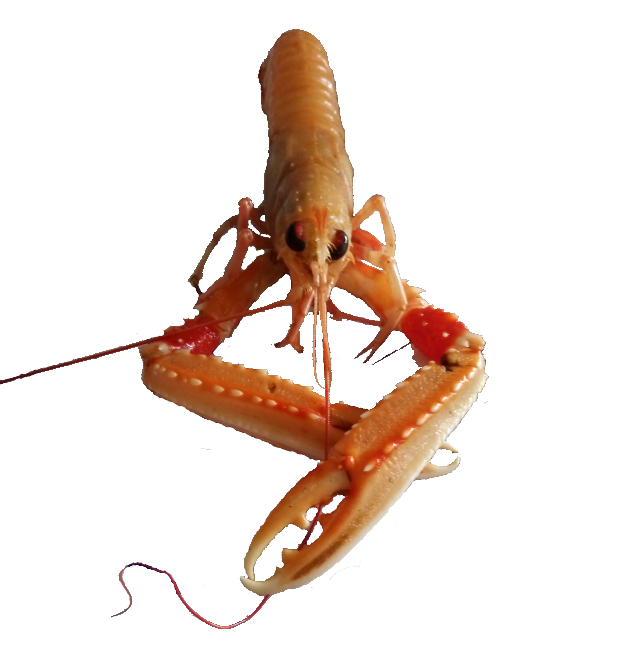
Nephrops norvegicus also known variously as the Norway lobster, Dublin Bay prawn, langoustine or scampi, is a slim, orange-pink lobster which grows up to 25 cm (including claws) long.
The first three pairs of legs bear claws, of which the first are greatly elongated and bear ridges of spines. Of the two pairs of antennae, the second is the longer and thinner one. The compound eyes are kidney-shaped, providing the name of the genus, from the Greek roots νεφρός (nephros, "kidney") and ops ("eye").
N. norvegicus is seen as the most important commercial crustacean in Europe. And as said in an earlier paragraph, it is the only extant species in the genus Nephrops.
Nephrops distribution
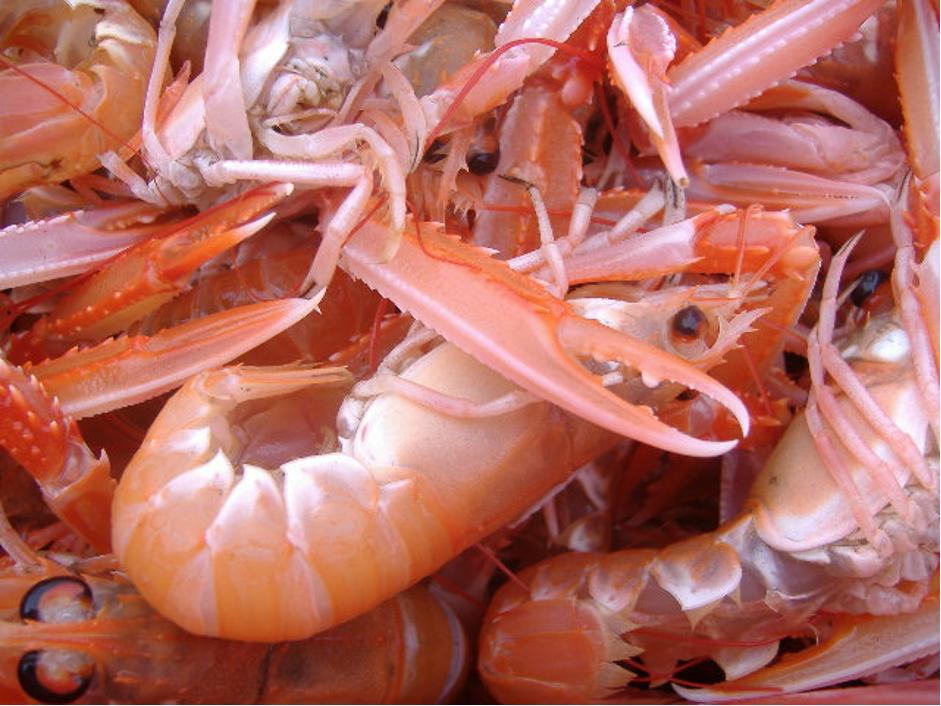
Nephrops is widely distributed on muddy substrates throughout the north-east Atlantic from Iceland in the north to Morocco in the south, but is absent from the Baltic Sea and Black Sea and only found in the northern Adriatic Sea in the Mediterranean region. Around Ireland they are found in depths from 20 m – 600 m but mainly at average depths of ~100 m on the shelf.
Due to its ecological demands for particular sediments, N. norvegicus has a very patchy distribution, and is divided into over 30 populations. These populations are separated by inhospitable terrain, and adults rarely travel distances greater than a few hundred metres. They construct shallow (on average 20-30 cm deep) semi-permanent burrows in muddy sediments which they live in most of their lives and only leave to forage or mate.
Reproduction cycle of N. norvegicus
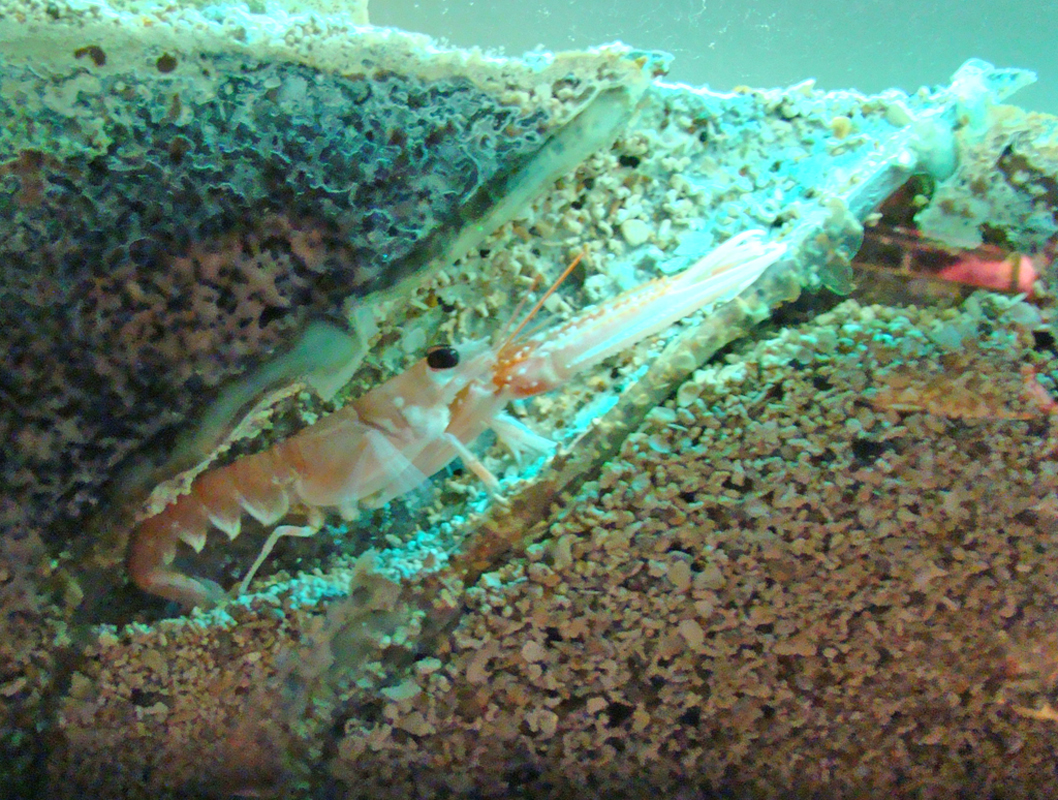
Nephrops norvegicus reach sexual maturity at between two and three years of age.
The reproductive cycle of Dublin prawn varies as much as the growth rate depending on the geographical position. Bell, Redant and Tuck (2006) found that the periods of hatching and spawning, and the length of the incubation period, vary with latitude and the breeding cycle changes from annual to biennial as one moves from south to north. Incubation of eggs is temperature-dependent, and in colder climates, the duration of the incubation period increases. This means that, by the time hatching occurs, it may be too late for the females to take part in that year's breeding cycle. In warmer climates, the combined effects of recovery from moulting and ovary maturation mean that spawning can become delayed. This, in turn, has the effect of the female missing out a year of egg carrying.
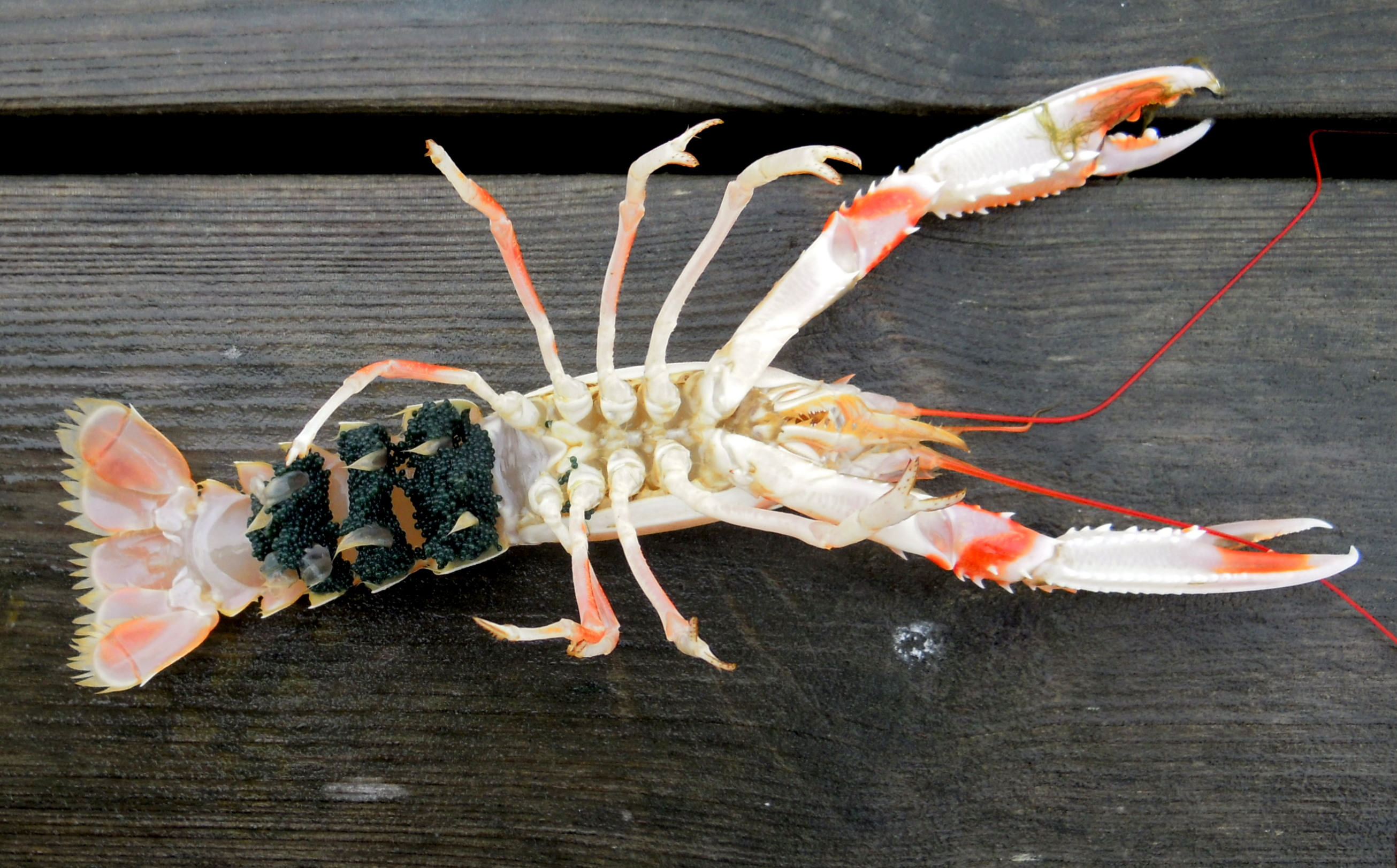
Adult male Nephrops norvegicus moult once or twice a year (usually in late winter or spring) and adult females moult up to once a year (in late winter or spring, after hatching of the eggs). In annual breeding cycles, mating takes place in the spring or winter, when the females are in the soft, post-moult state. The ovaries mature throughout the spring and summer months, and egg-laying takes place in late summer or early autumn. After spawning, the berried (egg-carrying) females return to their burrows and remain there until the end of the incubation period.
Hatching takes place in late winter or early spring. Soon after hatching, the females moult and mate again.
The eggs take about 4-8 weeks to develop into juveniles depending on water temperature.
During the planktonic larval stage (typically 1 to 2 months in duration) the Nephrops larvae exhibit a diel vertical migration behaviour as they are dispersed by the local currents. This complex biophysical interaction determines the fate of the larvae; the overlap between advective pathway destination and spatial distributions of suitable benthic habitats must be favourable in order for the larvae to settle and reach maturity.
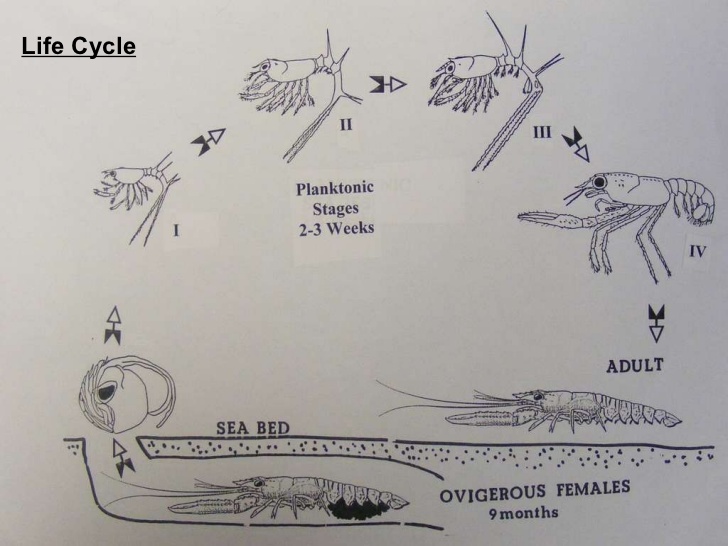
Unlike fish, there is no direct way to age Nephrops. Growth rates vary considerably in different areas. But the typical life span of N. norvegicus is 5-10 years, reaching 15 years in exceptional cases. Mean size is negatively correlated with density of individuals. The maximum carapace length recorded for Nephrops is a male of 9.3 cm from the Porcupine Bank Irish sampling programme.
Diet
Nephrops norvegicus is a scavenger as well as a predator that makes short foraging excursions, mainly during periods of subdued light (dawn and dusk). They feed on active prey, including marine and small fish, which they capture with their claws and walking legs.
!There is evidence that Nephrops norvegicus is a major eater of jellyfish!
Anthropogenic effects
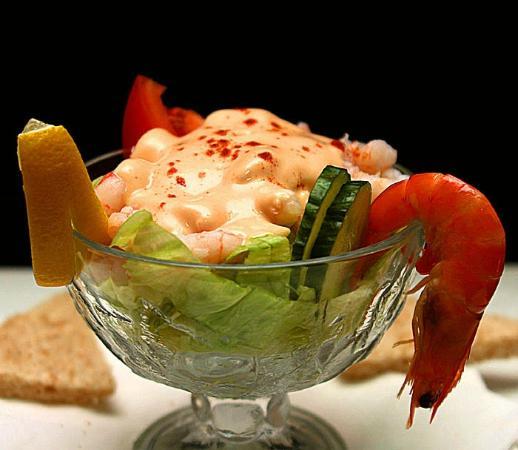
Several studies have indicated large accumulations of plastic microfibers in the gut of Dublin Bay prawns and in the sediments in which they live. The complicated gut system in this species is suggested to retain plastic fibers and places these stocks at potentially high risk of interference from marine microplastic pollution. Fibers which are too large or numerous to pass through the gut can form balls of aggregated material over time.
There is emerging evidence that high levels of microplastics result in false satiation and knock-on effects on individual condition. Studies to date indicated that inshore populations had more microplastics than those further offshore, along with a potential fishing gear effect where the plastics that were found were of similar type to those used in gear types used on trawls. This has implications for the sustainability of Nephrops stocks, the quality of food products, entry of plastics into the food system and design of more environmentally friendly fishing gear.

